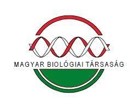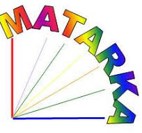A nagy fakopáncs (Dendrocopos major Linnaeus, 1758) élőhely preferenciája nagy mozaikosságú élőhelyen
Absztrakt
A harkályfélék (Picidae) az egész világon elterjedtek. Élőhelyeik fás társulások. A nagy fakopáncs (Dendrocopos major) általánosan elterjedt, gyakori faj. A vizsgálati területünkön 8 harkály faj fordul elő, ebből 7 csak alkalomszerűen vagy kis számban. A nagy fakopáncs a DINP-hoz tartozó Ócsai TK ligetes élőhelyén kisszámú kompetítor jelenlétében fordul elő. Az adatok az Ócsai Madárvártán 1984-2010 között függönyhálóval befogott madaraktól és a 2007-2010-ig végzett - térbeli eloszlásra vonatkozó - felmérésekből származnak. A következőkre kerestük a választ: Mekkora lehet a területen a költő párok denzitása? Mennyire optimális ez az élőhely az egyedek számára? Mely fa fajokat preferálják? Ezeken milyen téreloszlásban tartózkodnak a madarak? A vizsgálati területen a fásszárúak borítottsága folyamatosan növekszik, ezért a kezdeti egy pár helyett már 2-3 pár is költhet. A harkályok denzitása 1,5 pár is lehet 10 ha-on. Megállapítható, hogy az élőhely a faj számára az optimálishoz közelít. Bár a terület vegetációja igen mozaikos és nagy fajdiverzitású, a táplálkozó-pihenő madarak a különböző fűz- és nyárfa fajokat preferálják, a többi fafaj, részesedéséhez képest alul vagy felül reprezentált. A madarak a fák felső részén mozognak.
Hivatkozások
Alatalo, R. H. (1978): Resource partitioning in Finnish woodpeckers – Ornis Fennica 55: 49–59.
Aulén, G. (1988): Nest site selection of white-backed woodpecker Dendrocopos leucotos and great spotted woodpecker D. major in central Sweden – Swedish University of Agricultural Sciences, Department of Wildlife Ecology, Report 14.
Bai, M.-L., Wichmann, F. & Mühlenberg, M. (2005): Nest-site characteristics of hole-nesting birds in a primeval boreal forest of Mongolia – Acta Ornithologica 40: 1–14.
Bartha, D. (1998): Dr. Bartha Dénes egyetemi tanár előadásai alapján készült dendrológia kézirat – Soproni Műhely, Selmeci Társaság. 98 pp.
Benke, A. (2011): Leuce szekcióba tartozó hazai nyár fajok dunántúli állományainak populációgenetikai vizsgálata RAPD, PCR-RFLP és SSR markerekkel - VI. Euroregionális Természettudományi Konferencia – Szombathely - 17.
Bordács, S. & Borovics, A (2004): Az év fája - Genetikai ismereteink a fekete nyárról (Hibridek, klónok, magoncok; tények és tévhitek a fekete nyárról) – Erdészeti Lapok 139(5): 162–164.
Cramp, S. (1985): The Birds of the Western Palearctic. Volume 4. Oxford University Press, Oxford. ISBN 978-0198575078, 960 pp.
Csorba, G. & Török, J. (1988): Fatörzsön táplálkozó madarak táplálékszegregációja – Aquila 95: 78–82.
del Hoyo, J., Elliott, A. & Sargatal, J. (szerk.) (2002): Handbook of the Birds of the World. Vol. 7. Jacamars to Woodpeckers. Lynx Edicions, Barcelona. ISBN 84-87334-37-7, 613 pp.
Gorman, G. (2004): Woodpeckers of Europe. A study of the European Picidae – Published by Bruce Coleman. ISBN 1-872842-05-4, 192 pp.
Hogstad, O. (1971): Stratification in winter feeding of the great spotted woodpecker Dendrocopos major and the three-toed woodpecker Picoides tridactylus. – Ornis Scandinavica 2: 143–146.
Johnsson, K. (1993): The Black Woodpecker Dryocopus martius as a keystone species in forest - Summary of the thesis. – In: Johnsson, K.: The Black Woodpecker Dryocopus martius as a keystone species in forest. – Swedish University of Agricultural Sciences, Department of Wildlife Ecology, Uppsala, Report 24.
Kosiński, Z. & Kempa, M. (2007): Density, distribution and nest sites of woodpeckers Picidae in a managed forest of Western Poland – Polish Journal of Ecology 55(3): 519–533.
Kosiński, Z. & Ksit, P. (2006): Comparative reproductive biology of middle spotted woodpeckers Dendrocopos medius and great spotted woodpeckers D. major in a riverine forest – Bird Study 53: 237–246.
Leisler, B. (1992): Habitat selection and coexistence of migrants and Afrotropical residents – Ibis 134(Suppl. 1): 77–82.
Mori, S. (2005): Foraging habitat use by the great spotted woodpecker Dendrocopos major in a fragmented forest lanscape – The Ornithological Science 4: 179–182.
Ónodi, G. & Csörgő, T. (2011): Relation between forestation and the woodpecker community - 12th European Ecological Federation Congress – Avila, Spanyolország – poszter S.09-21-P
Osiejuk, T. S. (1998): Study on the intersexual differentation of foraging niche in relation to abundance of winter food in great spotted woodpecker Dendrocopos major – Acta Ornithologica 33: 135–141.
Pettersson, B. (1983): Foraging behaviour of the middle spotted woodpecker Dendrocopos medius in Sweden – Holarctic Ecology 6: 263-269.
Reed, J. M. (1990): The dynamics of red-cockaded woodpecker rarity and conservation Sveriges Lantbruksuniversitet, Institutionen foer Viltekologi Rapport 17: 1. International Woodpecker Symposium, Uppsala (Sweden), 14-16. Mar. (1989) 37–56.
Schmidt, E. & Gyurácz, J. (2009): Jelölésen alapuló módszerek – In: Csörgő, T., Karcza, Zs., Halmos, G., Magyar, G., Gyurácz, J., Szép, T., Bankovics, A., Schmidt, A. & Schmidt, E. (szerk.) : Magyar madárvonulási atlasz - Kossuth Kiadó, Budapest. ISBN 978-963-09-5865-3 40-41. pp. 40–45.
Selander, R. K. & Giller, D. R. (1959): Interspecific relations of woodpeckers in Texas – The Wilson Bulletin 71(2): 107–125.
Shackelford, C. E. & Conner, R. N. (1997): Woodpecker abundance and habitat use in three forest types in eastern Texas – Wilson Bulletin 109(4): 614–629.
Sóltz, Gy. & Fekete, L. (1893): Az erdőbecsléstan kézikönyve. Joerges Ágost özvegy és fia könyvnyomdája, Selmecbánya. pp: 120–122.
Stenberg, I. & Hogstad, O. (1992): Habitat use and density of breeding woodpeckers in the 1990’s in More og Romsdal County, western Norway – Fauna Norvegica Ser. C, Cinclus 15: 49–61.
Török J. & Csorba G. (1986): Táplálék szegregáció négy fatörzsön táplálkozó madárfajnál – Állattani Közlemények 73: 101–113.
Török, J. (1990): Resource partitioning among three woodpecker species Dendrocopos spp. during the breeding season – Holarctic Ecology 13: 257–264.
Török, J. (2009): Fekete harkály. – In: Csörgő, T., Karcza, Zs., Halmos, G., Magyar, G., Gyurácz, J., Szép, T., Bankovics, A., Schmidt, A. & Schmidt, E. (szerk.): Magyar madárvonulási atlasz. Kossuth Kiadó, Budapest. ISBN 978-963-09-5865-3 40-41. 671 pp. 390.
Török, J. (2009): Hamvas küllő – In: Csörgő, T., Karcza, Zs., Halmos, G., Magyar, G., Gyurácz, J., Szép, T., Bankovics, A., Schmidt, A. & Schmidt, E. (szerk.): Magyar madárvonulási atlasz. Kossuth Kiadó, Budapest. ISBN 978-963-09-5865-3 40-41. 671 pp. 387.
Török, J. (2009): Nagy fakopáncs – In: Csörgő, T., Karcza, Zs., Halmos, G., Magyar, G., Gyurácz, J., Szép, T., Bankovics, A., Schmidt, A. & Schmidt, E. (szerk.): Magyar madárvonulási atlasz. Kossuth Kiadó, Budapest. ISBN 978-963-09-5865-3 40-41. 671 pp. 391–392.
Török, J. (2009): Nyaktekercs – In: Csörgő, T., Karcza, Zs., Halmos, G., Magyar, G., Gyurácz, J., Szép, T., Bankovics, A., Schmidt, A. & Schmidt, E. (szerk.): Magyar madárvonulási atlasz. Kossuth Kiadó, Budapest. ISBN 978-963-09-5865-3 40-41. 671 pp. 384–385.
Török, J. (2009): Zöld küllő – In: Csörgő, T., Karcza, Zs., Halmos, G., Magyar, G., Gyurácz, J., Szép, T., Bankovics, A., Schmidt, A. & Schmidt, E. (szerk.): Magyar madárvonulási atlasz. Kossuth Kiadó, Budapest. ISBN 978-963-09-5865-3 40-41. 671 pp. 385–386.
Williams, J. B. (1975): Habitat utilization by four species of woodpeckers in a Central Illinois woodland – The American Midland Naturalist 93(2): 354–367.
Zarnowitz, J. E. & Manuwal, D. A. (1985): The effects of forest management on cavity-nesting birds in Northwestern Washington – Journal of Wildlife Management 49(1): 255–263.






